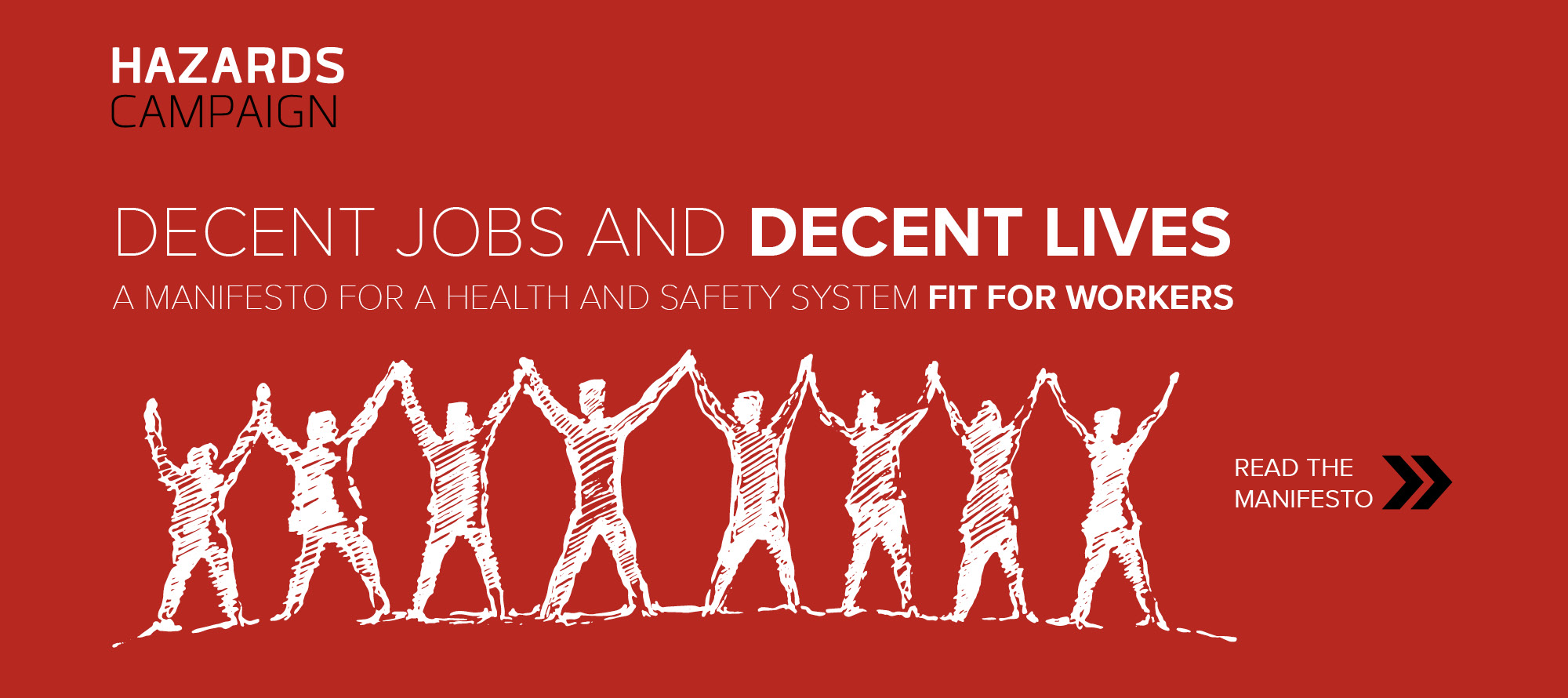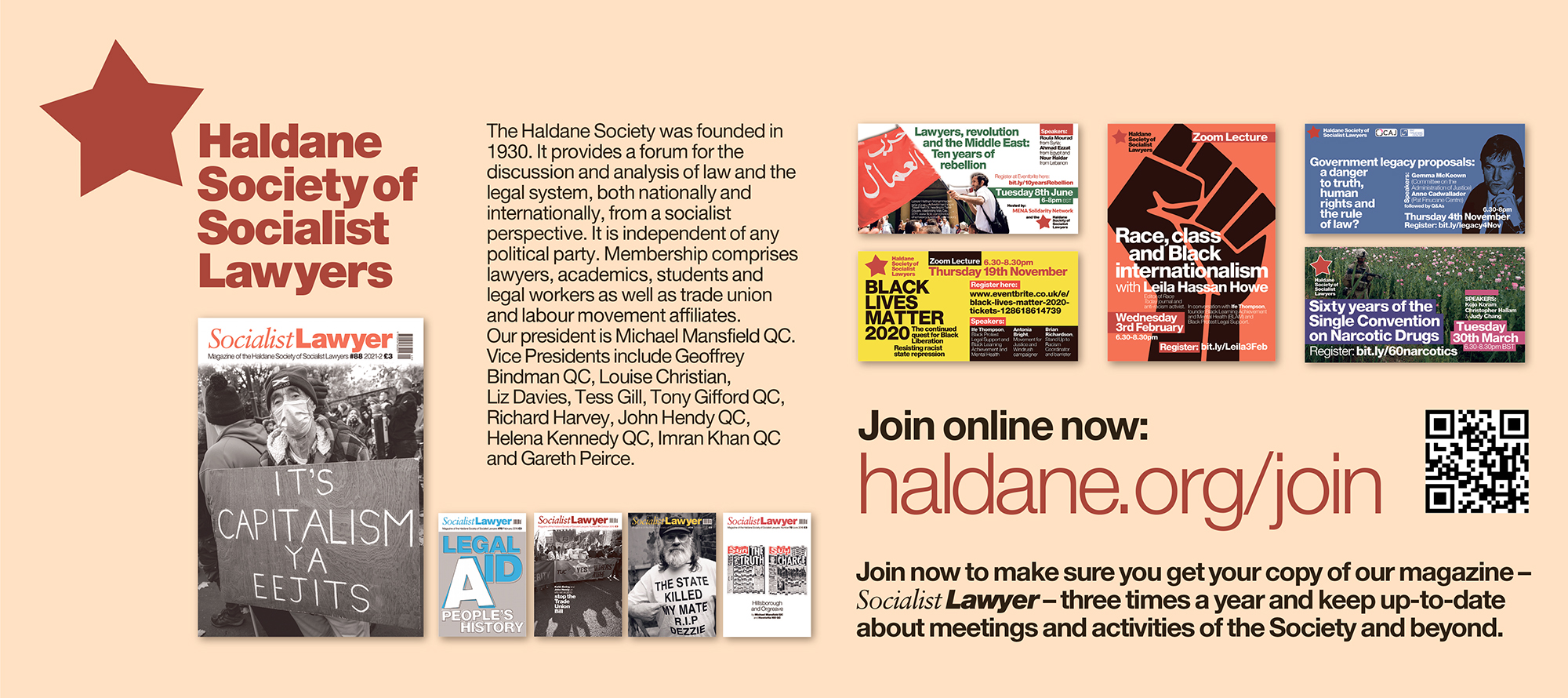Equality and Discrimination 2019 – London
A report on our recent conference covering equality law and protecting workers’ rights.

Conference report

By Roger Jeary
The conference focussed on developments in equality law during the past year and how workers’ rights can be protected regardless of personal characteristics. It was chaired by Nerys Owen from the Labour Research Department who welcomed delegates to the Conference held at the HQ of Unite the Union. She explained that, unfortunately due to family illness, Donna Rowe-Merriman from Unison was unable to attend. In her opening remarks Nerys put the conference in context and the potential for advancement on equality with a new government. She referred to the fact that tomorrow (14th November) was equal pay day and yet the achievement of this was still some way off despite legislation being on statute for the last 50 years.
Sectoral collective bargaining and equal pay
The first speaker Siobhan Endean, National Officer for Equalities at Unite spoke on the issue of sectoral collective bargaining and how this could impact on equal pay. She began by setting out the challenges to the achievement of equal pay. These looked at funding challenges, employment rights and labour market challenges as well as economic challenges. She suggested that sectoral collective bargaining on its own would not deliver equal pay and made clear that equal pay should deliver a pay increase for women and that the pot needed to be bigger to achieve this. She paid tribute to those women that had taken industrial action to secure equal pay.
Siobhan said that funding challenges however had inhibited progress in achieving equal pay with massive cuts in local government funding and these issues had to be addressed. Workers rights had also to be addressed due to the inherent imbalance in the workplace. Rights such as secure contracts, the equal value concept, parental leave and trade union freedom to organise all impacted on the ability to secure equal pay. Labour market challenges such as job security also presented pressures on equal pay. The undervaluing of skills of women workers needed to be addressed through an occupational framework which addressed the areas of work where many women were concentrated.
Siobhan referred to broader economic challenges which were also part of the problem. The lack of financial regulation and cut-throat competition, alongside short term investment and international trade deals all contributed to the obstacles to deliver equal pay. Future challenges included digitalisation and automation, including women working in social care whose work could be enhanced. Siobhan said we needed to challenge the dominance of neo-liberal economics. She reminded conference that what brings women to work is the absolute belief that their work matters. She was delighted that the transformative measures were to be included in the Labour Party manifesto and the creation of a Ministry of Employment Rights which would be responsible for transforming workplaces.
Turning to sectoral collective bargaining Siobhan stressed the need for the bargaining to include low pay, unequal pay, travel time, sleep-in payments and bonuses in the national structure of the bargaining. She also stressed that social care should be compared with a range of sectors and interaction between the sectors was essential. Job evaluation needed to be examined carefully to root out the potential for discrimination. Job design and skills needed to be developed for women’s progress through career structures. Sectoral bargaining would need to cover conditions of employment, not simply pay. Working hours, flexibility, lone working, health and safety and job security all needed to be covered if equality issues were to be addressed.
Within sectoral bargaining Siobhan highlighted the need for employers to carry out equality monitoring through equal pay audits and gender and race pay gap auditing. Equality monitoring needed to be undertaken by Sectoral Employment Commissions as well as government departments. And women needed to be represented at the sectoral bargaining negotiating table in all sectors not just where they predominate. Coupled with this was the need for adequate enforcement processes and a trade union organisation that included women in its leadership structures.
Equal pay?
There then followed the first of two sessions on Equal pay. Caroline Underhill from Thompsons Solicitors examined whether equal pay had yet been achieved. She began by saying that equal pay law was complicated and difficult to use. She reminded us that in history the phrase of equal pay for equal work was regarded as a ‘battle cry’ but this was not the same as pay justice or pay fairness. Caroline focussed on equal pay and the treatment of women and outlined the background to equal pay law. She told Conference that we were now approaching the third year of equal pay reporting which tells you that organisations are equal or unequal as an organisation. It doesn’t tell you about equal pay for equal work.
Caroline posed the question how do you win an equal pay case using the law? One of the ways is by using statistics. However, she drew attention to the case of McNeil v HMRC [CA] women argued that women were clustered in the lower quartile whereas men were clustered in the upper quartile. But this argument itself does not win you equal pay. The Claimant argued that difference in pay was due to length of service but this wasn’t clear in the facts because of many other factors. So statistics were not helpful in this case. Caroline emphasised the importance of the history of how pay had been determined over many years as a means of proving an equal pay claim. Workers need to examine this at the very beginning of a journey towards claiming equal pay.
Caroline described that the idea that women had to rely on statistics to prove equal pay is an abomination. A lot of recent cases have been in the public sector and generally had been reliant upon gender segregation in the jobs. However this is not the only explanation for differences in pay. Referring to another recent case, BMC Software v Shaikh, presented a much more favourable outcome. In this case the employer had to show what the factors were which brought about the difference in pay. Effectively that employer argued that recruitment and retention, market forces etc had brought about pay differences. The tribunal found that employer failed to prove these were actual reasons for difference in pay. The EAT found that in favour of the Employer, basically arguing that if the employer said it was so it must be true. The CA however said the common theme as regards each of the three factors was that BMC have not provided any evidence to support their assertions.
Caroline told conference that you cannot group individual claims on a single claim form. Also she reminded conference that, arising from an ASDA case, despite a successful outcome of comparing separate workplaces as part of the claim, the concept of single source, which is capable of remedying equal pay, the fact that women and men work in different workplaces didn’t matter was not affirmed by the judges. This is being appealed at Supreme Court.
Tackling sexual harrasment in the workplace
Caroline was followed by Sian Elliott, TUC Women’s Equality Officer, who spoke on how to tackle sexual harassment in the workplace. Sian outlined her talk at the beginning on what it was that determined sexual harassment. Participants were asked to come up with their definitions which identified ‘unwanted conduct of a sexual nature which violates someone’s dignity… ‘ as a general definition. She emphasised that this was not confined to physical actions but included other non physical actions as well. It also can take place outside of the workplace. She referred to TUC research which which found that one in two women had been sexually harassed at work; 68% of LGBT workers had experienced sexual harassment in the workplace and that four out of five don’t feel able to report sexual harassment to their employer.
Factors to which Sian drew attention included 90% of perpetrators were male and an abuse of power is a common feature but not always the case. Social media has added to the ways in which sexual harassment manifested itself and that younger women were more likely to experience sexual harassment through social media.
Sian told the conference that the impact of harassment was multi-faceted. 15% of women felt less confident at work; 10% reported that harassment had a negative impact on their health; others wanted to leave their work but couldn’t due to financial or other factors.
As a trade union issue, Sian stressed that the TUC recognised that it had an impact on workers, that trade unions can provide a voice for women who are harassed, by the ending of precarious and casualised work and recognising this as a health and safety issue. She also pointed to further steps of what needed to be done by government. The law was failing women due to the absence of an easily enforceable preventative duty on employers. Currently the duty of care only kicks in once a woman has reported sexual harassment Seeking a shift of the burden by introducing a requirement for employers to prevent and mitigate sexual harassment enforced through a code of conduct would make it easier for women to redress unwanted sexual approaches. Sian also suggested that trade unions could challenge workplace cultures through campaigns and posters which adopt a zero tolerance approach to bullying and harassment.
Discrimination – recent cases
Following a break for lunch, the afternoon session kicked off with a presentation from Paul Scholey of Morrish Solicitors reviewing the impact of recent cases. The range of topics covered by his talk was expansive stretching from sex and death to vegetables with a number of cases on religion and belief. He began by speaking about a French case Xavier X v TSO. The complainant had vigorous sex while away on business for the weekend and subsequently died. An industrial court in France found that he was on business from Friday to Monday and sex was a natural activity, much as eating or showering, so his family won their claim for an industrial accident.
A second case of Forbes v LHR Airport highlighted a different interpretation of ‘in the course of employment’ when an offensive online posting of a racialist nature was done by an employee but found not to be in the course of their employment. Both cases addressed the issue of what is “in the course of employment” and came to different conclusions.
In a case, Raj v Capita Business Services Ltd, a complaint by a man who was managed by a woman who stood behind him massaging his neck, back and shoulders. He lost his case as tribunal found conduct did not amount to sexual touching. Respondents lied according to the tribunal findings and the complainant argued that the burden of proof had therefore shifted. But tribunal said the mere fact of a lie by the employer in this case did not shift burden of proof.
Paul then referred to the House of Commons Women’s and Equality Committee Report on enforcement. He reported that the Government had said no to the recommendation that an employer should meet complainants’ legal costs in full. Specific wording mandated for NDAs also rejected as were Exemplary damages. The government has accepted that it should look at time limits for such claims. Access to legal advice will also be looked at. However Paul was pessimistic about the outcome of the government’s considerations.
On disability the issue about whether an employer ought to have known about a disability was raised in the case of A Ltd v Z. Although originally found in favour of applicant as although applicant had not disclosed disability the employer must carry out an assessment which was detailed and coherently reasoned. However the case was lost on appeal at EAT because the applicant had denied having a disability throughout her employment although it was recognised that employees may not always talk about their disability.
Paul then moved to vegetables and the case of Conisbee v Crossley Farms Ltd and Others. In this case the tribunal found that vegetarianism was not a belief. But tribunal did say that they may have found differently had the claimant been a vegan. A more recent case is due to look at the specific argument of whether being a vegan can be classified as a belief.
Paul then addressed the issue of perceived.disability – a police constable had applied to join force but failed the hearing test. The force said that gap was so small it would let her in. She worked for a couple of years and transferred to a new force who checked her hearing again and whilst it had not changed the employer thought it would get worse. She pursued a claim but could not say she was disabled. The Appeal court said that this was perceived disability and could be pursued through a disability claim which she then won.
In the case of Page v NHS the complainant had strong views objecting to same sex adoption which he continually went on about. The NHS dismissed him as executive director. Because he had kept going on about it the NHS won their case saying it had not dismissed him on belief but his continuing pronouncements on it.
Finally Paul addressed Injury to feelings. He explained that there are three bands to determine compensation for injury to feelings. In this case the tribunal awarded £16000 for discrimination, £5000 for aggravated damages and £3000 for injury to feelings. Respondent argued that this had been a single act of discrimination and should have been in the lower band of awards. The EAT said that the whole situation had to be considered and the complainant had suffered as a result of the manner of the respondent’s actions in dealing with this case.
Winning on equal pay
The second speaker of the day on Equal Pay was Rianna Gargiulo from The Equality Trust who spoke about the organisation’s Equal Pay 50 campaign. She referred back to the long history of equal pay over the last century. Rianna also referred to the gender pay gap and the progressive nature of this over the course of women’s employment. She highlighted the difference between unequal pay and partial job segregation and explained that the Trust had worked with FTSE 100 companies on the issue but they appeared in denial that an equal pay issue exists in their workplaces.
Rianna spoke about high risk factors which impact on unequal pay such as lack of structures, flexibility and starting pay levels. There were also problems with adopting the wrong structures, such as overlapping pay grades, performance related pay, and differential non pay terms. External factors also impact through caring responsibilities and the gendered role of the labour market.
She referred to examples from their own surveys of companies such as Carnival plc, owners of P and O Ferries who had a gender pay gap of 43%; Easy Jet with a 54% gender pay gap and a bonus pay gap of 58%. She emphasised that for reporting to be effective it needed to be reported within grades as well as overall.
She recognised that trade unions face difficulties in tackling unequal pay with employers arguing that male rates should diminish and also pointed to the difficulty where the burden falls upon the individual to pursue a claim. This makes progress more difficult with many women regarding pursuing such a claim as career suicide.
The Trust’s research suggests that it would take 60 years to remove gender pay gap at current progress. One of the actions the Trust was taking to address this was to identify key stakeholders who were in a position to influence progression more quickly.
The Trust were adopting a range of campaigning activities including the promotion of the Fawcett Society’s Equal Pay Advice Service which was free to women. Also The Equality Trust reported on pay inequality in the FTSE 100 and s a result have developed some engagement with these companies.
Finally Rianna mentioned the role of men in this campaign, their positions of power and that greater gender equality benefits everyone. She concluded by reminding everyone that next May saw the 50th Anniversary of the Equal Pay Act enacted in 1970.
Sexual harrasment in education
The final speaker was Helen Carr from UCU, who talked about the issues faced by workers in education. Helen focussed on sexual harassment and the work being done by UCU branches with their individual employers. In a recent UCU survey over 1000 members, of whom 998 were women, responded. Harassment in education comes in many forms, from other workers, by students, by parents and by managers. Particular problems faced by PhD students who bridge the gap between student and staff.
Most respondents were in universities and over half reported sexual harassment. Two thirds reported harassment by colleagues and one quarter by students. She emphasised the impact on relationships with colleagues and health deterioration. All of this impacted on their work performance. Members were embarrassed and felt anger that they had allowed it to happen.
Helen presented individual testimonies which highlighted the nature of complaints and their devastating impact they had had. 47% said they had spoken to someone. Few though had spoken to their union representative. This was in part due to the wish to avoid formal processes which were perceived as career damaging. Others were reassured after reporting it and were satisfied with the way it was dealt with. Overall the concern was about whether anything meaningful would be done.
Helen then spoke about the actions taken by the UCU. It had Introduced sexual harassment training for reps, creating greater awareness and an understanding of their role. They had suggested that branches appoint an harassment champion, so that one member would get an overview and develop expertise in dealing with sexual harassment cases. UCU has also established a helpline with a counselling service to allow members to talk through what had happened and receive advice on how to proceed. The helpline was also available to reps. It was encouraging branches to undertake surveys and create campaign posters and factsheets and model processes. The union supported individual cases through internal and external processes and had produced a Discrimination Toolkit in conjunction with Thompson’s solicitors.
Helen ended with another individual member testimony. A PhD student had met up normally with her supervisor academic but then she received more invites to meet with him. She received an online valentines card which she felt was inappropriate as he was a married man. She was invited to go for a walk with him which she was reluctant to accept. This whole event caused great upset and she refused to go. From that date on he was unpleasant with her making her life at work less bearable. This case illustrated the impact that harassment can have on an individual.
Download event documents
- Sian-Elliott-presentation-1.pdf - 324.29 KB
- Siobhan-Endean-presentation-1.pdf - 159.37 KB
- Rianna-Gargiulo-presentation-1.pdf - 1.96 MB
- Paul-Scholey-presentation-4.pdf - 1.19 MB






